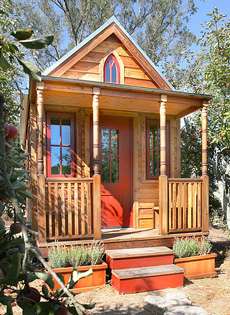 Utah Stories examines the growing popularity of the U.S. mini-houses compared to european dachas and cottages.
Utah Stories examines the growing popularity of the U.S. mini-houses compared to european dachas and cottages.
100 square feet of living space would cause a McMansion owning suburbanites to cringe. However Urbanites, who might already be accustomed to somewhat small quarters, are finding these little places quite appealing. The photos of these homes show life surrounded by the wilderness, trees and the great outdoors, making the space an affordable weekend retreat. This trend is quite a shift from the typical American lifestyle which often places more value in square footage, marble counter tops and stainless steel appliances. These mini-homes are all about the space outside of the home, more than wowing visitors by wealth inside.
Owning both a city apartment and small country house retreat, is actually not a new concept. Dachas (which is Russian for cottage or summer home), have been around in Europe for centuries. Many city apartment dwellers in Germany, France and especially Russia own dachas in the country. Each country has their unique style and mode de vie. Common lower or middle-class Russians dachas are typically used to grow large gardens full of potatoes, beets, and other vegetables helping sustain families. German Bavarian cabins are usually fancy garden homes. German summer cottages often have flower gardens maintained immaculately.
Compared to the European varieties the United States version of the dacha is very small. Most German and Russian varieties I’ve seen are around 300-500 square feet, however the Tumbleweed mini-houses have seven models under 300 square feet and just one around 550 square feet. This month Tumbleweed owner Jay Shafer is taking his mini-house model on tour along the west coast from the Canadian to Mexico border.






